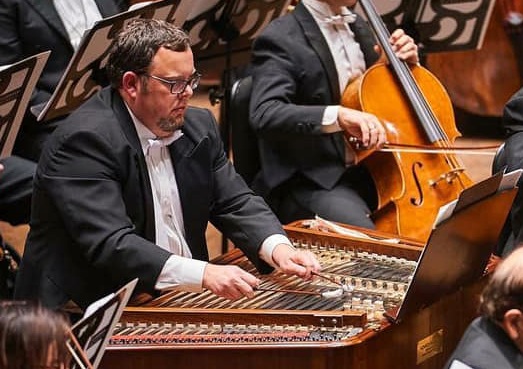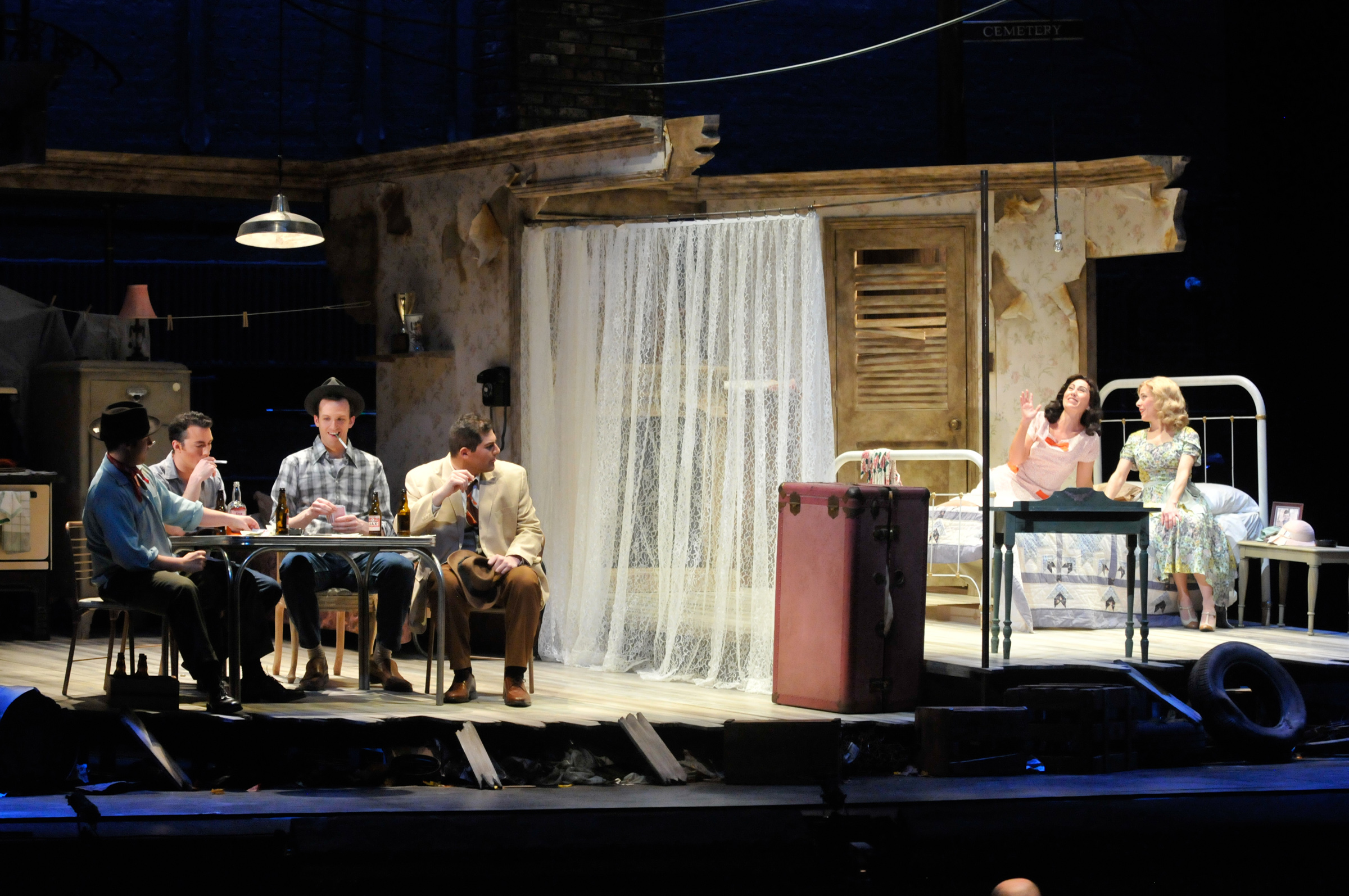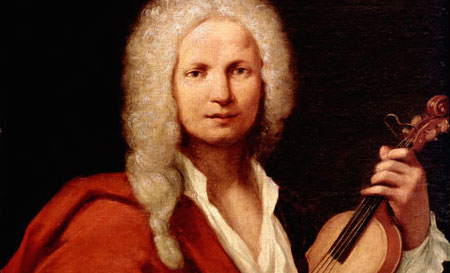Chester Englander. Photo courtesy of the artist
The Louisville Orchestra Virtual Experience: Abrams Conducts Stravinsky
Teddy Abrams, conductor
Chester Englander, Guest Artist
A review by Annette Skaggs.
Entire contents are copyright © 2020 by Annette Skaggs. All rights reserved.
Leave it to Teddy Abrams and the Louisville Orchestra to awaken a new appreciation for the music of Igor Stravinsky. While he is most noted for works like Petrouchka and the storied Rite of Spring, which prompted riots at its premiere at the Théâtre des Champs-Élysées in Paris in 1913. While these are certainly highly ranked among the classical music canon as we know it today, Stravinsky had a host of other “hits”.
This evening’s program introduced us to the time in Stravinsky’s life that he worked with some notational and structural experimentation, exploring the composer’s Early Russian sound to his years of composition in the Serial Style. Mr. Abrams quipped that Stravinsky was the David Bowie of Classical Music, because of his revolutionary style.
The evening began with two pieces that are short but oh so sweet. Fanfare for a New Theatre, a duet for two trumpets and Song without a Name (“Lied ohne Namen”), a duet for two bassoons. Both pieces are bright and airy and certainly feel regal and welcoming.
Fanfare, based on the twelve-tone style, was written to commemorate the opening of the New York State Theater. At the premiere, each trumpeter was placed on opposite sides of the theater and acted as herald to the festivities.
Lied is a lessor known miniature of Stravinsky’s and is written a bit more simplistically. However, when you listen it seems far from simple. The bassoonists are always communicating with each other to check their rhythms and timing, so a good ear and musicality are important to this piece whose playing time is less than a minute.
Like many composers, Stravinsky was influenced by other styles of music. It is unmistakable that some of his most common influences would be from the Slavonic dance and folk songs of his native land. But as he traveled he began to envelope new sounds and ways to write. Upon his migration to the United States, ragtime had already become a popular sound in Europe, and its charm certainly grabbed a hold of Stravinsky.
Mr. Abrams shared that Stravinsky claimed that he had never seen ragtime performed in person, but that friends had gifted him a large stack of ragtime scores. It was from reading the manuscripts that Stravinsky was able to master the sound and style and composed his Ragtime for Eleven Instruments.
Written for 2 violins, viola, double bass, flute, clarinet, horn, cornet, trombone, cimbalom, and percussion, the piece is not performed often. Why you may ask? Because of the one instrument that you are probably not familiar with, the cimbalom.
A largish instrument, about the size of a marimba, the cimbalom has ancestry and qualities similar to the dulcimer but originated in Hungary. Luckily there are a handful of artists out there that know how to play it and we were able to hear guest artist Chester Englander share his craft. It’s sound certainly made me think of Appalachian folk music.
Unlike American ragtime that has more of a sense of freestyle, Stravinsky’s iteration is certainly more structured. Also, as one can hear, there is the use of instruments that aren’t commonly found in your everyday ragtime bands, such as the cimbalom and bassoons.
The evening’s choices of pieces, for good or bad, were fairly unknown to me, Ragtime being one of them. As I listened, I had a faint recollection of a similar theme in another piece. Ah-ha! Teddy confirmed what I thought, the ragtime style is a short theme used in one of Stravinsky’s other works, “A Soldier’s Tale”, that the Louisville Orchestra presented in 2019.
Next, we moved to another familiar style, Chamber Music, with Octet for Wind Instruments. Now, of course, you are thinking wind instruments like clarinet and bassoons, right? Nope. Stravinsky enlarges the range to include anything that requires human wind to be played: two trombones, two bassoons, one clarinet, one flute, and two trumpets.
The first movement, Sinfonia, written in Sonata form, relies heavily on short notes, quick blasts of notes that help to shape the structure in tone and feel. While a theme is hard to find, it is there. The second movement, Tema con variazioni, is exactly as it is titled, themed, and varied. While the overall sound is more fluid than the first movement, it is easy to follow and one can find hints to other familiar styles of writing such as waltz and fugue. The third, Finale, is rhythmic and danceable. One can certainly hear themes interspersed from the other movements.
This piece compelled me to pay close attention to the playing of the instruments. The bassoonists’ fingers were always in a state of fancy fingering and short, quick breaths to keep up with the composer’s writing. It was certainly, a job well done. I have heard said that Stravinsky was fond of the sound of the bassoon and enjoyed fitting the instrument into as many compositions as he could.
Concerto in E-flat referred to as “Dumbarton Oaks” was written in the style of Bach and his Brandenburg Concerto, according to Mr. Abrams. I can’t argue that observation at all. As part of Stravinsky’s arrival to America and the end of his Neo-Classical era, the piece serves as a bridge to his next musical era.
Written for a smaller ensemble, this piece allows for several solo opportunities for its instrumentalists. And every one of them shined. Scored for flute, clarinet, bassoon, horns, violin, violas, cellos, and basses, the orchestration has a chamber music feel, but a bit larger sound.
The three movements, Tempo Giusto, Allegretto, and Con motto, are seamless and difficult to differentiate where one ends and the other begins, save for a brief allowance of a break by the conductor. Written in counterpoint, it is imperative that each section be accurate in their technical precision, such as in the Con motto where pulsating notes are used to build excitement and hold the listener’s ear. But as I mentioned, there are moments throughout where virtuosity is sublime.
Not to put too fine a point on it, but we are all still learning from the new normal of being “Socially Distant”. Because of this, many orchestras, including our own, have had to re-imagine, re-adjust and re-configure the staging and seating and even, re-align their programming to present pieces that require fewer instruments.
On Saturday the on-line premiere of a socially distanced version of Stravinsky’s The Firebird Suite was presented. Arranged by Schäffer (sorry I did not catch this person’s first name), this piece is certainly pared down to reflect our distancing needs. While one may fear that there will be a lot lost to the reduced complement of musicians I did not find that to be the case. If anything, it highlighted some of the nuances of the composition.
The notations were all there and the Demon Dance was still as exhilarating with half of the orchestra as it is with an entire ensemble. Now, that does not mean that I don’t miss the whole group, because I very much do. However, I also recognize the need to re-invent and make what is old new, for the sake of safety and for the survival of the performing arts.
In the Louisville Orchestra’s Virtual season opener, Teddy asked that listeners submit poetry that was inspired by the concert. He shared with Saturday’s audience that he had indeed received a good supply of responses. One, written by a child, was titled “A Visit to the Instruments”. While I don’t have a transcript of the poem, suffice it to say that it absolutely was an enjoyable poem and put a huge smile on my face.
This week’s new project for the audience is to create a piece of visual art telling the story of the Firebird, an icon of Russian folklore. If you are so moved please send a picture of your submission to tabrams@louisvilleorchestra.org. I can only imagine what our artistic community will come up with and I can’t wait to see them.
Bravi Tutti!!!
October 24, 2020
LINK TO LOUISVILLEORCHESTRA.VHX.TV
Louisville Orchestra
Louisvilleorchestra.org
Annette Skaggs is heavily involved as an Arts Advocate here in Louisville. She is a freelance professional opera singer who has performed throughout Europe and in St. Louis, Cincinnati, Boulder, Little Rock, Peoria, Chicago, New York and of course Louisville. Aside from her singing career, she has been a production assistant for Kentucky Opera, New York City Opera, and Northwestern University. Her knowledge and expertise have developed over the course of 25+ years’ experience in the classical arts.





